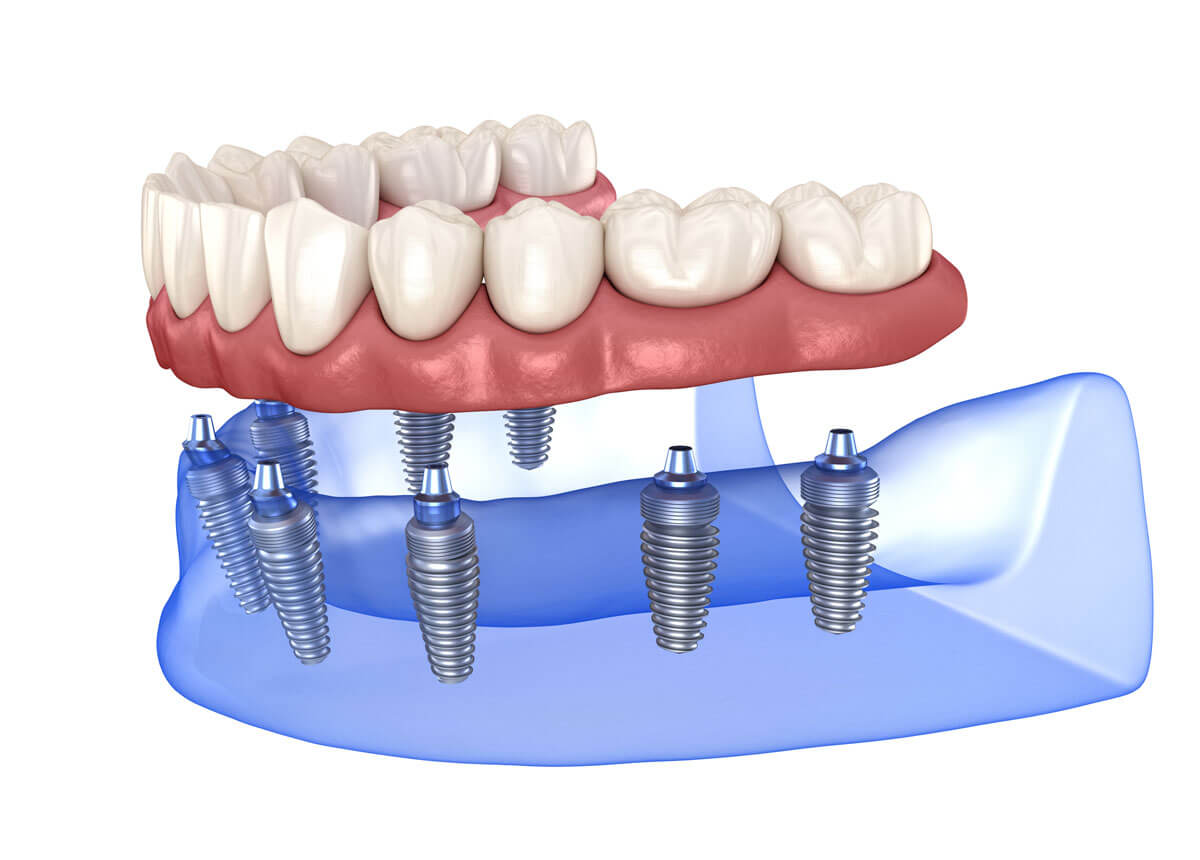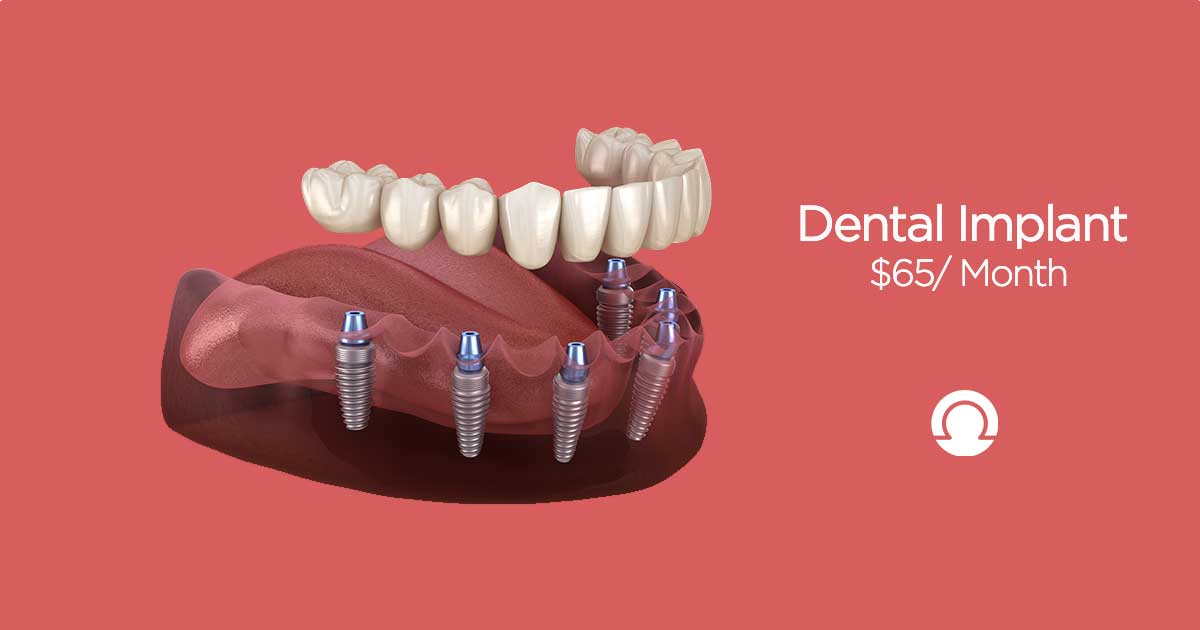See This Report on Dental Sense
See This Report on Dental Sense
Blog Article
Facts About Dental Sense Revealed
Table of ContentsThe Ultimate Guide To Dental SenseThe Best Strategy To Use For Dental SenseSome Ideas on Dental Sense You Need To KnowRumored Buzz on Dental Sense
are medical devices surgically implanted right into the jaw to bring back an individual's capability to eat or their look. They supply assistance for man-made (phony) teeth, such as crowns, bridges, or dentures. When a tooth is lost as a result of injury or disease, an individual can experience problems such as fast bone loss, defective speech, or modifications to chewing patterns that cause pain.Dental implant systems include an oral implant body and oral implant abutment and might also consist of a joint fixation screw. Dental implants. The oral implant body is surgically inserted in the jawbone in place of the tooth's root. The dental implant joint is generally attached to the dental implant body by the abutment fixation screw and expands via periodontals right into the mouth to sustain the connected artificial teeth
(https://medium.com/@matthewmusic33101/about)Framework of The Dental Implant System selecting dental implants, talk with your dental company about the potential benefits and risks, and whether you are a prospect for the procedure. Things to consider: Your general wellness is an essential consider determining whether you are a good candidate for oral implants, the length of time it will certainly take to heal, and the length of time the implant might remain in location.
Smoking might impact the recovery process and decrease the long-lasting success of the implant. The recovery procedure for the implant body might take a number of months or longer, during which time you usually have a short-term joint instead of the tooth. the dental implant treatment: Very carefully comply with the dental health directions offered to you by your dental company.
The 7-Second Trick For Dental Sense
Implant failure can cause the need for another operation to fix or replace the dental implant system. Brings back the ability to chew Recovers cosmetic appearance Aids keep the jawbone from diminishing because of bone loss Protects the health of the surrounding bone and periodontals Aids keep nearby (neighboring) teeth secure Improves high quality of life Damages to surrounding natural teeth during dental implant positioning Injury to the surrounding cells during surgical procedure, such as sinus opening Injury during surgical treatment (for instance, crack of bordering jawbone) Poor function, such as seeming like the teeth do not bite together typically A feeling that the tooth is loosened or turning in area arising from an abutment screw loosening Implant body failure (looseness of the implant body) due to systemic infection, which may be most likely in clients with unrestrained diabetes mellitus because of local infection in bone and gum tissues sustaining the dental implant body as a result of postponed recovery, which might be more probable in individuals who smoke Problem cleaning up the periodontals around the implant, resulting in poor oral health Untreated gum condition Post-surgical numbness as a result of nerve impingement or damages Constantly inform health and wellness care suppliers and imaging professionals that you have oral implants before any magnetic vibration imaging (MRI) or x-ray treatments.
FDA is not familiar with any type of unfavorable events reported for MRI or x-ray treatments with dental implants. Dental implants systems are typically constructed from products that follow international agreement standards of the International Organization for Standardization (ISO) or ASTM International. These requirements have details of what makes a safe product.

An oral implant is a structure that changes a missing tooth. With screw-like tools, the doctor inserts a dental implant into the jawbone, and it works as a support for a fabricated tooth, called a crown. A gadget called a joint links the synthetic tooth to the dental implant. The crown is custom-made to fit the individual's mouth and match the color of their teeth.
A Biased View of Dental Sense
Some people are not eligible for dental implant surgical treatment. It is for dental doctors to operate people with: severe illnessuncontrollable metabolic diseasebone or soft cells disease or infectionIf these concerns are solved, a person can have the surgery. In, oral specialists abstain from operating individuals with: If people with any of the above go through oral implant surgical treatment, there is a higher threat of the implant failing.

Oral dental implant surgical procedure is a tailored process. It's not the exact same for everybody. The following provides a basic summary of what you can expect your dental professional, oral cosmetic surgeon, periodontist or prosthodontist to do: Put the dental implant surgically. Give you time to recover. Connect the article and last crown, bridge or denture.
Next, your surgeon will carefully position the oral implant into your jaw. Your doctor will certainly reposition your gums and close the laceration with stitches. If your dental implant is near the front of your mouth, your dental expert will make a temporary tooth for you to wear until you recover. By doing this, you will not have a gap in your smile while you recuperate.
The 6-Minute Rule for Dental Sense
During the healing phase, your jawbone ought to fuse to the oral implant. This process can take anywhere from three to nine months.
When your implant heals, your dental practitioner can affix the joint (little connector post) and your final restoration (crown, bridge or denture). This typically takes regarding one hour to finish and might require a 2nd small surgical procedure. You should not really feel any pain throughout your dental implant Home Page treatment because your provider will use medicine to numb your gum tissues.
Report this page